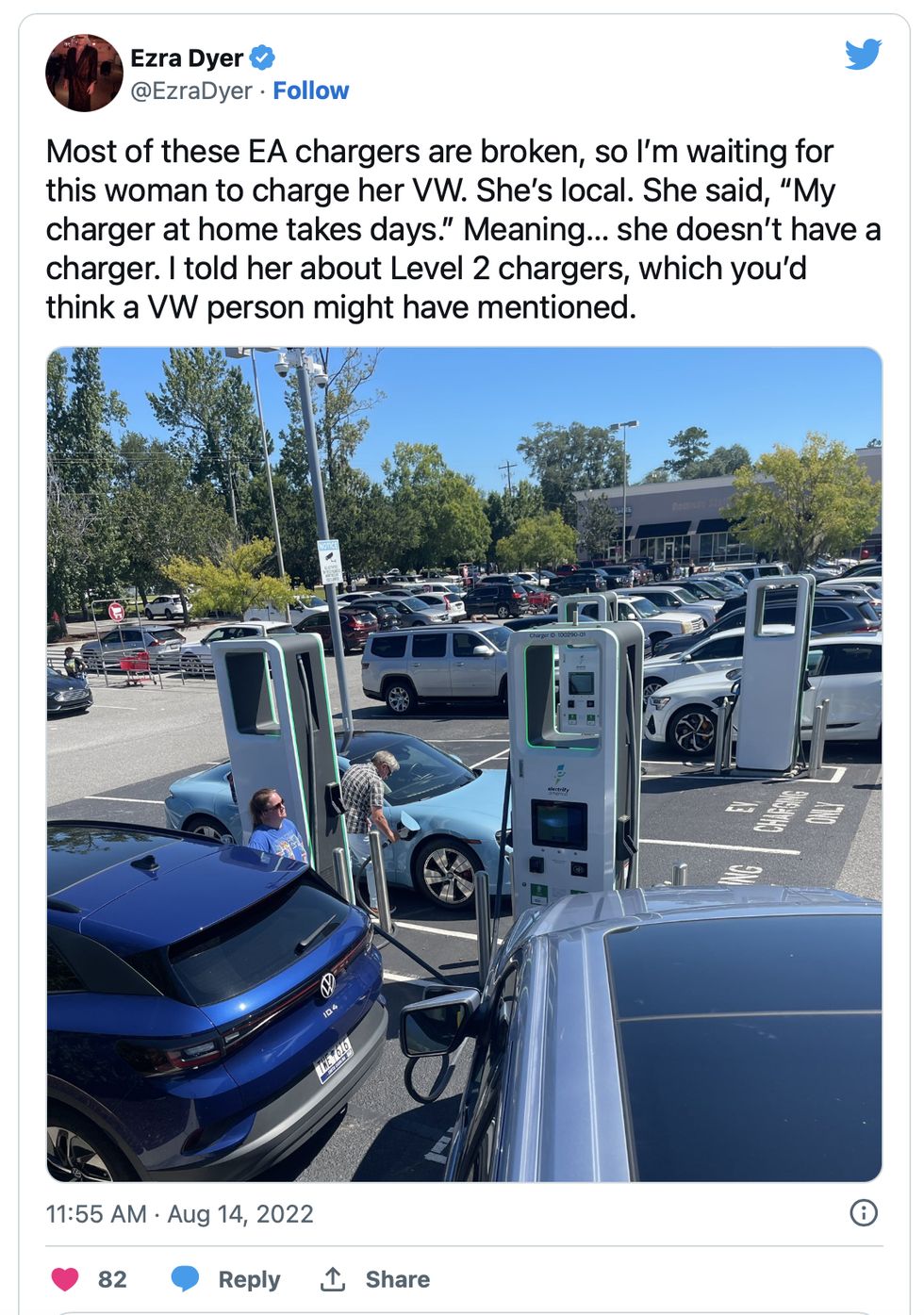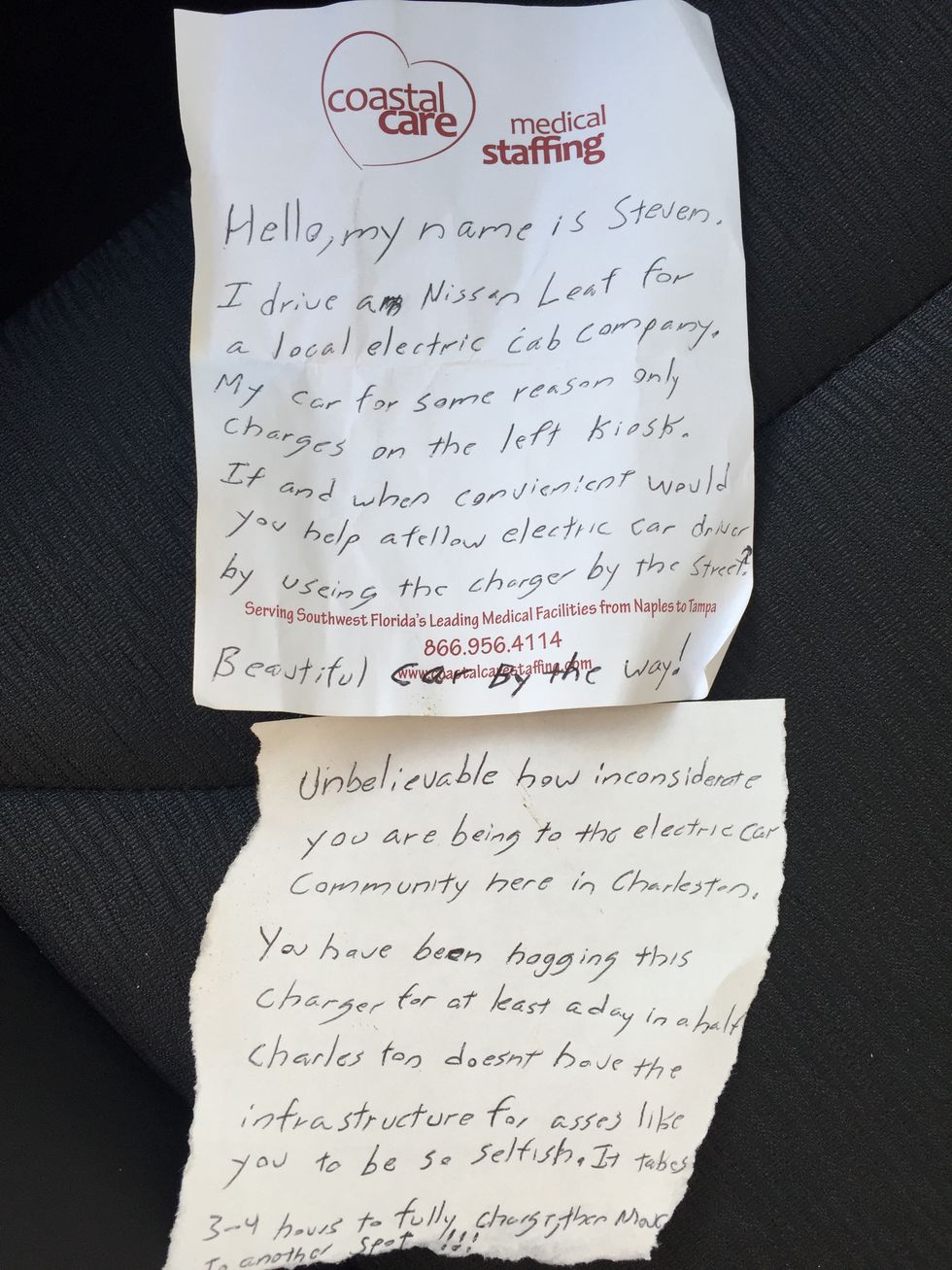Our EV charging obsessions tend to focus on speed. How many kilowatts can a given car guzzle, and where can you find the fastest electron pumps in the land? We lust for 800-volt architectures and 350-kW charge stations (or, OK, any given Tesla and a Supercharger) but the reality is that we don’t always need to charge in 20 minutes. Or even 20 hours. Which is why I say: Bring us more Level 1 chargers! Given enough time, erosion can make the Grand Canyon and your 120-volt house outlet can charge a GMC Hummer EV while you’re on vacation in Del Boca Vista. That is, if you can find a 120-volt outlet, which was my challenge on a recent trip with a Lucid Air Touring.
On a Thursday morning, my family piled into the Lucid and set a course for Charleston, South Carolina, where we’d board a cruise ship and (hopefully) return on Monday. The Touring is EPA rated at 384 miles of range with its summer performance tires, and Charleston is about 230 miles from my house in North Carolina, so getting there wouldn’t be a problem. Getting back, though, wouldn’t be possible without some sort of charging. And given my last experience at the Charleston Electrify America (think Mad Max: Fury Road in the shadow of a Chuck E. Cheese), I hoped to avoid revisiting that particular parking lot. Would there be some way to charge the car while I was gone?
Remember Your Charging Etiquette
My first thought was to find a Level 2 charger somewhere near the port, but the problem there is a matter of timing—a Level 2 is too slow to help much when you’re in a rush, but too fast to leave your car plugged in for four days. At least, if you want to return to four un-slashed tires. In fact, the one time I left a Tesla Model X plugged in long enough to fully charge in Charleston, I came back to find an angry note from a Nissan Leaf owner. And he had a point, really. I could have just charged enough to get that falcon-winged lozenge to the nearest Supercharger, but I wanted to avoid a stop. Just like on this trip.
So that leaves Level 1, a.k.a. house current. I tested the Lucid by plugging it into a standard outlet at my house to check its charge speed, which fluctuated between one and three miles of range added per hour. I’d be gone for more than 90 hours, so . . . that might work! But surprisingly, given the increasing popularity of EVs, your humble 120-volt outlets are hard to find in the places where they’d make a ton of sense—long-term parking lots.
I scoured the Port of Charleston website and studied satellite views of its parking lot before reaching the conclusion that I’d better not count on finding a plug there. Maybe there is one, but it seems like the kind of situation where a guy with a flathead screwdriver tells you to park next to a lamp post while you slip him a $20 bill. You come back, your car is charged, nobody asks any questions, capeesh?
Charging while Away
Instead, I opted to park at a friend’s house in nearby Mount Pleasant and take a Lyft to the port. And thus, on Thursday morning, I plugged in with an indicated 100 miles of range showing and forgot about the Air for four days. Or maybe not quite four days. I was certainly thinking of it on the last day of the voyage, when 50-knot winds and 10-foot seas made me wish I were back in the Lucid already, serenely gliding home with 620 horsepower instead of starring in my own production of Deadliest Catch aboard the now ironically named Carnival Sunshine.
221 Miles from a Three-Prong Outlet
The next day, when we returned to the blissful serenity of the Lucid, we found that my plan worked pretty much as expected. Over 93 hours, the Air soaked up an indicated 221 miles of range from that three-prong outlet, giving us 321 miles of predicted range. As it turned out, that was enough to get home, despite the Lucid’s perpetually optimistic range display and my own propensity for keeping up with traffic on I-95. (Which, in South Carolina, tends to approximate the average speed of a lap at Darlington.)
Occasionally, I had to put myself in a right-lane timeout to goose that miles-per-kilowatts number, but we rolled back into my driveway having covered 221.3 miles and consumed 290 miles’ worth of indicated range. We still had enough buffer that I occasionally flexed the Lucid’s passing prowess—50 to 70 mph in 2.6 seconds—on the final two-lane part of the journey.
So, not only did I save myself the time and hassle of a potentially crowded EA visit, but I freed up a spot for someone else there by dint of my absence (I am a great guy). And all it took was a household outlet. Which, unfortunately, was at an actual house.
So, airports and long-term parking lots across the land, how about adding some plugs? It’s easy, it’s relatively cheap, and it would make you extremely popular with owners of these newfangled electric cars. If you really want to electrify America, start with 120 volts.
Senior Editor
Ezra Dyer is a Car and Driver senior editor and columnist. He’s now based in North Carolina but still remembers how to turn right. He owns a 2009 GEM e4 and once drove 206 mph. Those facts are mutually exclusive.



